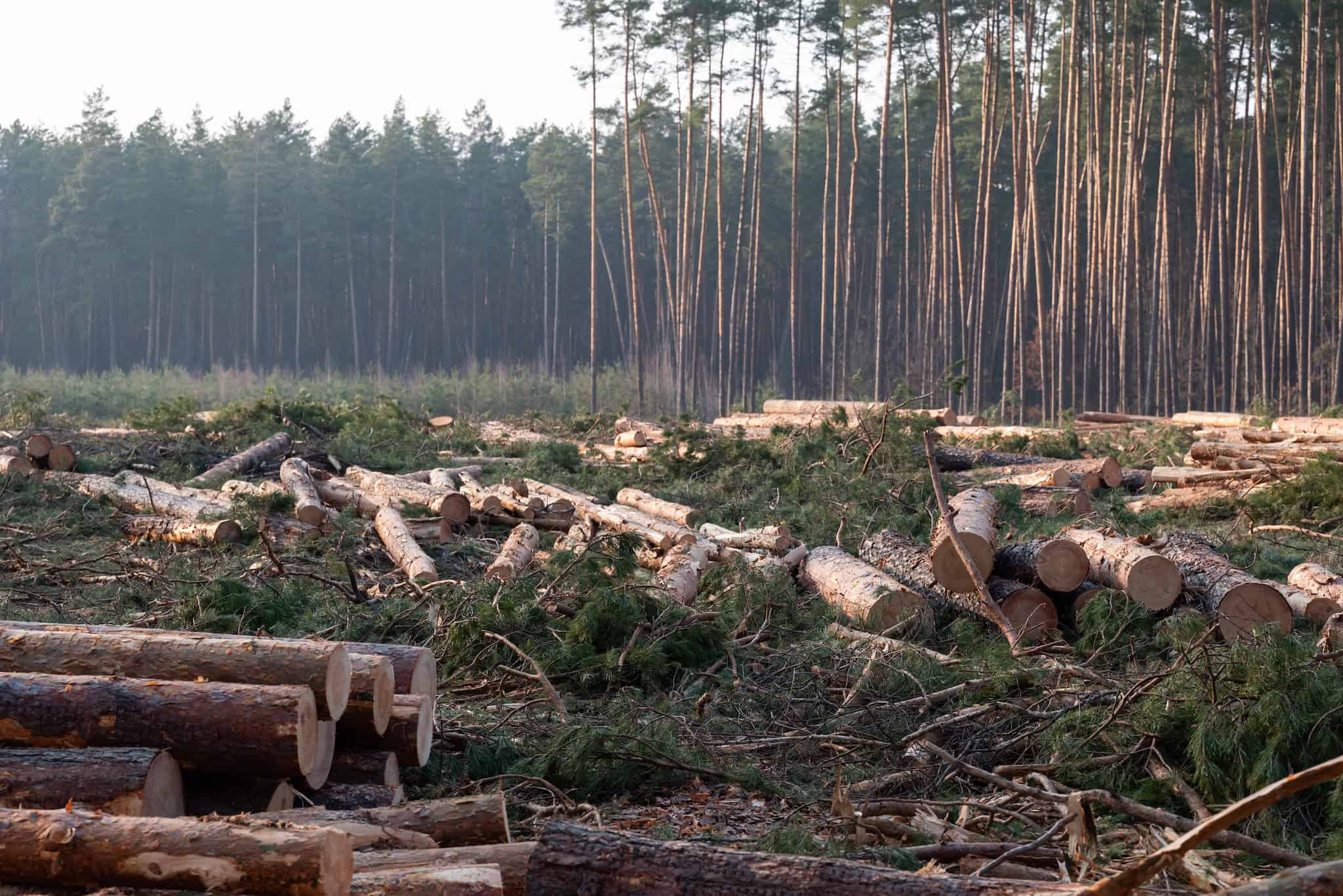If felling timber looks bad, it might not be all bad
Forestry and forest management are misunderstood. Forestry plays a critical role in our global economy and is more complex than simply “cutting down trees” (although logging is also a complex process).
It’s not hard to see why forestry faces intense public scrutiny. People are not wrong that trees are good! Trees capture carbon, they produce oxygen we breathe, and they help mitigate climate change. Who can argue against oxygen?
When people see large swaths of forests being logged, timber felled, and entire forests replaced with seemingly nothing, it appears to be an assault on the very air we breathe. People instinctively recoil at the sight of a logged hillside, but we’ve also come to treat forests like museums, untouchable and precious. But in nature, untouched, even by nature itself, often means unbalanced. Nature seeks balance.
Forestry is also mired in politics, with “big business interests” on one side and “environmental advocates” on the other, all seemingly at odds over the role of forestry.
Wood products play a vital role in our daily lives. People need homes. People need heat sources. People need all sorts of wood-based products, from desks and chairs to railroad ties…and don’t forget toilet paper! Given alternatives for some of these needs, such as coal for heat sources or cheap plastic chairs, wood is far superior for our health.
Managing forests requires navigating politics, media attention, climate impact and local constituents, whose methods and approaches may vary, causing public confusion. However, forestry experts generally recognize the complexities of balancing soil integrity, carbon issues, ecological habitats, climate change, exotic and invasive species, disease, and the business needs that support people’s livelihoods.
The distinct qualities of wood set it apart from all others
Wood has qualities that set it apart from any other material, including metals, minerals, petroleum, and food.
- Wood is highly renewable.
- Wood manufacturing consumes the least amount of environmental inputs compared to other building materials.
- Wood is plentiful and among the most regionally available natural building materials in North America, Asia, and Europe.
- Forests store carbon.
- Wood stores vast sums of carbon, even in its cut-down state.
- If biophilic design is the goal, you can’t do much better than incorporating wood into your project.
- Wood can be safely used, to some degree, in almost any environment.
A robust forest industry provides markets that are as competitive as, or more competitive than, those for less sustainable materials, such as rare earth minerals. In most U.S. states, forestry and wood-related industries are among the most significant sectors for jobs when you consider timber, forestry, woodworking, homebuilding, and other wood-sustained industries.
Today’s forests are the legacy of our forefathers’ foresight in restoring and protecting forests during the historic logging era of the 1800s and early 1900s. Yes, government protections helped secure some of these spaces, but logging industries recognized that their short-term gain couldn’t ignore the need to protect long-term interests.
Today, new pressures exist. To maintain a stable supply of wood products, there are reasons to be concerned about wood beyond its mere availability.
There are vast sums of “new mortality” in the western US. These are trees that simply reach the natural end of their life, exceed what is harvested, and aren’t being used productively. Worse, high tree mortality is a sign of poor forest health. This imbalance is new over the last decade, as our forests age and average tree diameters increase.
A portion of this mortality might be better used to drive more wood industries. Using these trees for more productive purposes can enhance economic activity and forest health, enabling new growth while minimizing our environmental impact.
Managing expectations and forests for productive use

Like many aspects of our vast and intricate economy, decisions regarding forest management often face pushback from individuals who, rightly, may be concerned about degraded scenic views, tourist destinations, or property values.
It’s hard to agree to the forest over your hillside being cut down or thinned. This is valid, but nature has a way of forcing our hand through forest fires and massive ice storms that destroy trees en masse, often resulting in nearly worthless wood salvage that, at best, might end up as wood chips for playgrounds instead of housing or furniture.
Forest fires are sometimes the result of too much protection, too, as wooded areas close to people have fewer controlled burns or thinning and cannot regenerate as nature intended until they fester into an uncontrollable tinderbox.
Forestry management issues also exacerbate the housing supply problem in the US. The framing, flooring, trim, particleboard, and other wood products account for about 15-20% of the total cost of a house. Lowering the cost of timber can lower the cost of housing construction and retrofits.
Skewed opinions, especially among legislators, too often color our forest management. When we look at the big picture and the environment as a whole (as we should!), “full forest life-cycles” and proper management can give us win-win-win situations with less carbon in the atmosphere, healthier forest ecosystems, and sustainable and affordable building materials.
The choice isn’t between cutting and saving forests. It’s whether we let them rot, burn, or freeze — or become something lasting, like our homes, schools, and communities.



















































